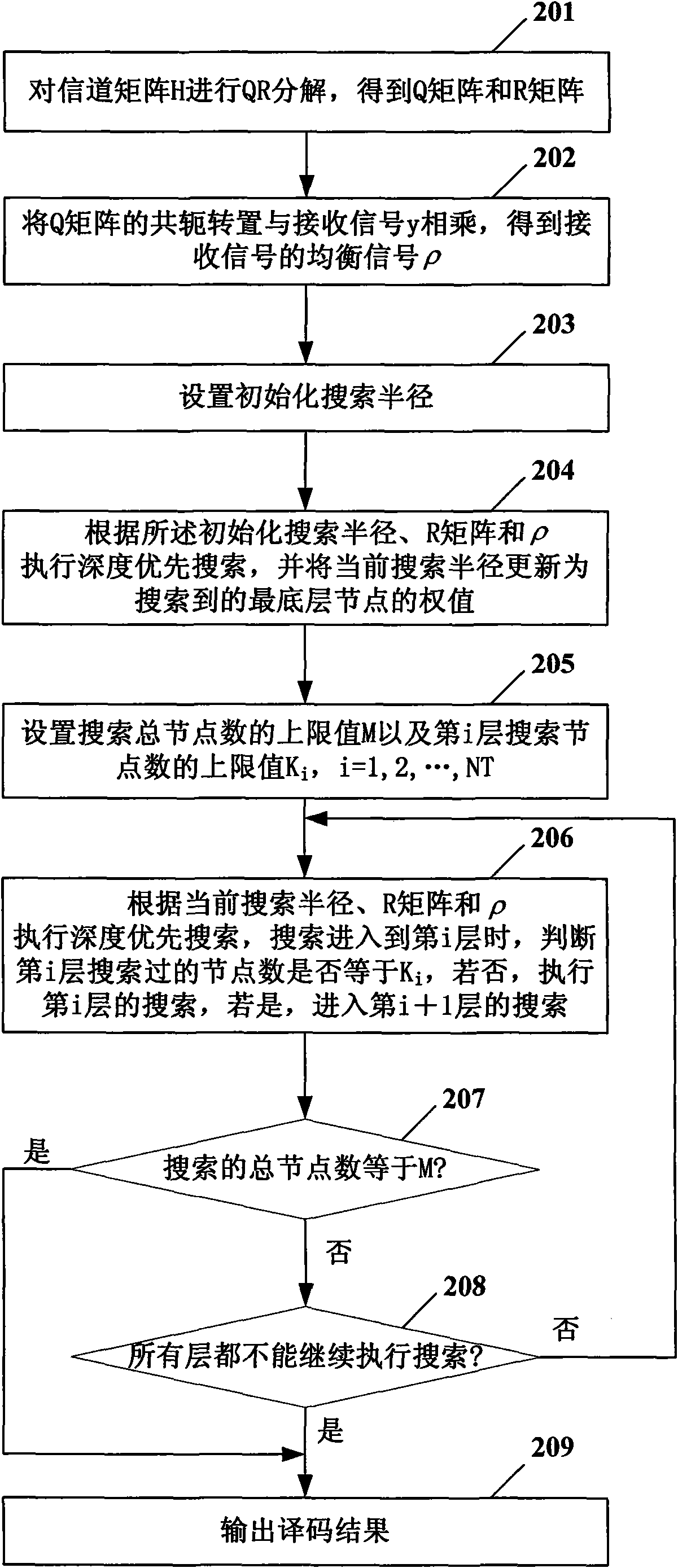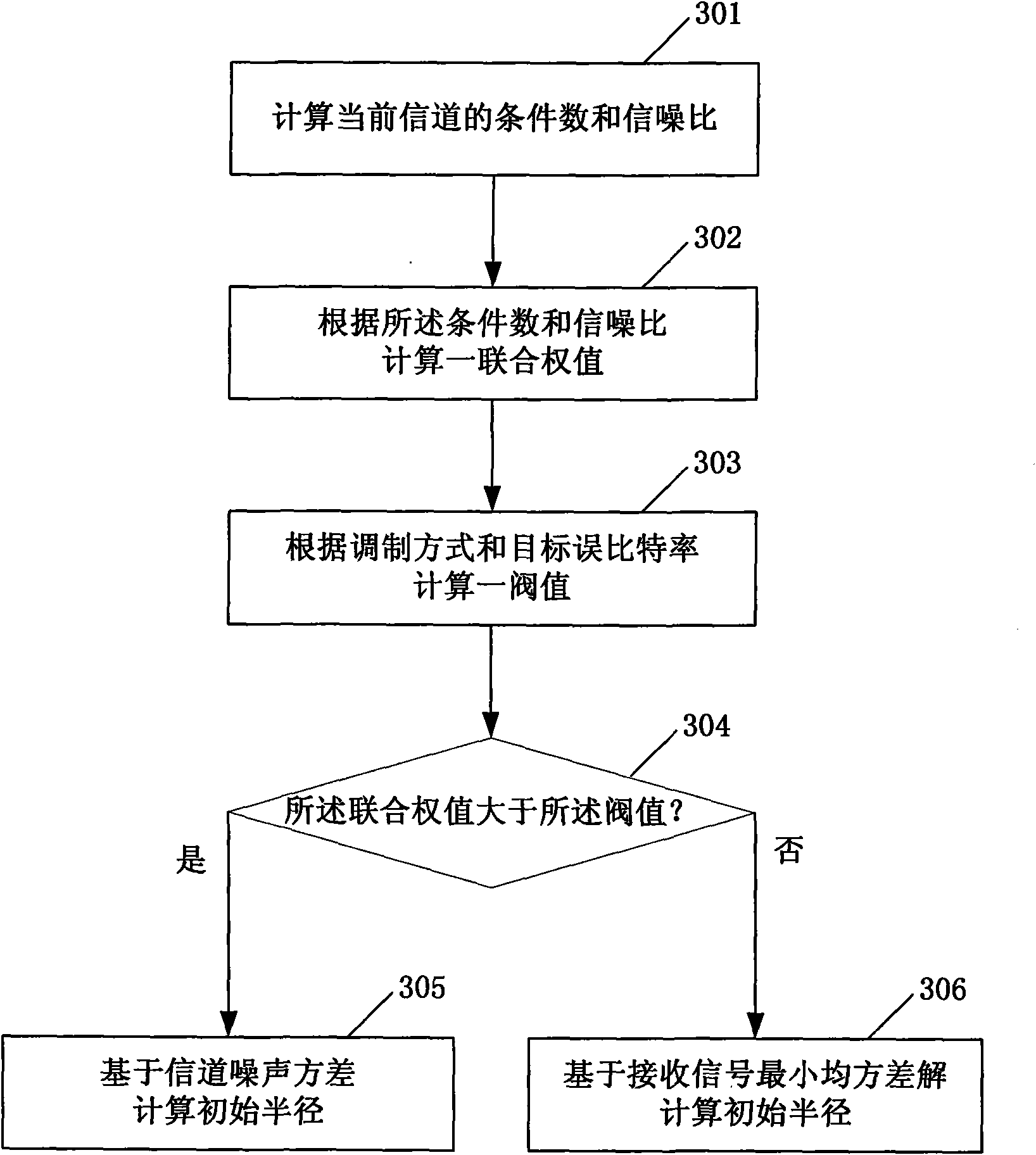Method for detecting spherical decode based on depth-first search
A technology of depth-first search and spherical decoding, applied in the direction of preventing/detecting errors through diversity reception, digital transmission systems, and preventing errors, etc., can solve search failure, excessive computational complexity, quantitative analysis and detection complexity and delay Difficulties and other problems, to achieve the effect of reducing computational complexity and being easy to implement
- Summary
- Abstract
- Description
- Claims
- Application Information
AI Technical Summary
Problems solved by technology
Method used
Image
Examples
Embodiment Construction
[0031] In order to make the objectives, technical solutions and advantages of the present invention clearer, the present invention will be described in detail below with reference to the accompanying drawings and specific embodiments.
[0032] For the basic MIMO system model such as figure 1 As shown, assuming that the number of transmitting antennas is N t , The number of receiving antennas is N R , Its channel is a flat fading channel, then the system can be shown by the following formula:
[0033] y=H·s+n (1)
[0034] Where y is N R ×1 received signal vector, s is N t ×1 transmit signal vector, n is N R ×1 noise vector, its mean value is 0, variance is N 0 / 2, H is N R ×N t One-dimensional channel model vector (channel matrix).
[0035] Using the maximum likelihood estimation algorithm, the expression is as follows:
[0036] min s ∈ Ω | | n ...
PUM
 Login to View More
Login to View More Abstract
Description
Claims
Application Information
 Login to View More
Login to View More - Generate Ideas
- Intellectual Property
- Life Sciences
- Materials
- Tech Scout
- Unparalleled Data Quality
- Higher Quality Content
- 60% Fewer Hallucinations
Browse by: Latest US Patents, China's latest patents, Technical Efficacy Thesaurus, Application Domain, Technology Topic, Popular Technical Reports.
© 2025 PatSnap. All rights reserved.Legal|Privacy policy|Modern Slavery Act Transparency Statement|Sitemap|About US| Contact US: help@patsnap.com



